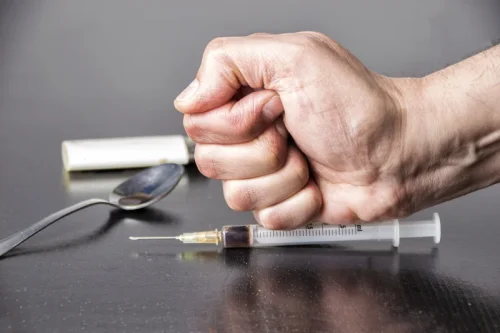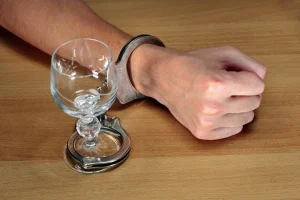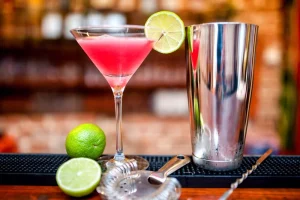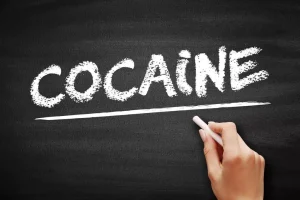
The team recruited seven healthy adults to take a high dose of psilocybin or methylphenidate, the generic form of Ritalin, under controlled conditions. Because psychedelic trips carry the risk of users having negative or scary experiences, a pair of trained experts stayed with each participant throughout the experience. The experts helped prepare the participants for what they were likely to experience, provided guidance and support during each experiment, and helped the volunteers process what had occurred afterward.
Brain rewires itself after injury ‘on the edge of what’s compatible with life’

This therapy may work, in part, through its effects on certain personality traits. One small-scale study involving subjects with treatment-resistant depression found that, after engaging in psilocybin therapy, their neuroticism scores decreased while their scores in extraversion, openness, and conscientiousness increased. Despite its status as a Schedule 1 controlled substance at the Federal level, possession of psilocybin has been either decriminalized or deprioritized in some states and the District of Columbia. Other states have proposed or enacted psilocybin-specific legislation to regulate its production, sale, or supervised administration. Generally, the recreational use of psilocybin refers to mushrooms containing psilocybin; synthetic production of psilocybin is complicated and expensive. For someone going through a personal crisis or using mushrooms in an unsafe, unsupportive environment, the chances of a “bad trip” increase.
What are the risks of using psilocybin mushrooms?
You can then determine if you’d like to consume a bit more of the fungus to produce more noticeable effects. If you’re new to magic mushrooms, it’s vital to note that different species of psilocybin-containing magic mushrooms vary in strength and effects. And there are many different ways you can dose mushrooms to produce a variety of different experiences. From non-perceptual microdoses to an ego-smashing ‘heroic dose’, there are various paths to working with the mushroom consciousness. Of course, the path you choose depends on your intention and what you’re looking to achieve.
Psilocybin: Facts about the main ingredient in psychedelic ‘magic’ mushrooms
The intensity and duration of the effects of psilocybin are variable, depending on species or cultivar of mushrooms, dosage, individual physiology, and set and setting, as was shown in experiments led by Timothy Leary at Harvard University in the early 1960s. Once ingested, psilocybin is rapidly metabolized to psilocin, which then acts on serotonin receptors in the brain. The mind-altering effects of psilocybin typically last from two to six hours, although to individuals under the influence of psilocybin, the effects may seem to last much longer, since the drug can distort the perception of time. Possession of psilocybin-containing mushrooms has been outlawed in most countries, and psilocybin has been classified as a Schedule I controlled substance under the 1971 United Nations Convention on Psychotropic Substances. People who consume psilocybin-containing mushrooms — otherwise known as magic mushrooms — typically undergo a surreal experience in which their sense of space, time and self is distorted. Advocates have long argued that, under the right conditions, psychedelic experiences can alleviate mental distress, and a smattering of scientific studies suggests they may be right.
In general, the effects include euphoria, visual and mental hallucinations, changes in perception, distorted sense of time, and perceived spiritual experiences. When psilocybin is ingested, it is broken down by the liver in a process called dephosphorylation. Physical effects may occur, including nausea, vomiting, euphoria, muscle weakness or relaxation, drowsiness, and lack of coordination. Much of the media attention that has shined on our magical fungi friends is focused on the therapeutic benefits of psilocybin. Mushrooms are being used to help those suffering from mental health challenges such as depression, anxiety, and substance use disorders.
People With Depression and Anxiety
Psilocybin[a] (/ˌsaɪləˈsaɪbɪn/ sy-lə-SY-bin, /ˌsɪl-/) is a naturally occurring psychedelic prodrug compound produced by more than 200 species of fungi. The most potent are members of genus Psilocybe, such as P. azurescens, P. semilanceata, and P. cyanescens, but psilocybin has also been alcohol and rage what you need to know isolated from approximately a dozen other genera. Psilocybin is itself biologically inactive but is quickly converted by the body to psilocin, which has mind-altering effects similar, in some aspects, to those of lysergic acid diethylamide (LSD), mescaline, and dimethyltryptamine (DMT).
Archeological evidence suggests that humans have been using “shrooms,” also called magic mushrooms, for ceremonial and medicinal purposes for thousands of years. Psilocybin also has immediate cross-over effects, meaning it builds tolerance against other psychedelics in the same pharmacological class. Learn more about psilocybin tolerance and how to prevent bad trips in our in-depth article. In most countries, it is illegal to possess, buy, or grow psilocybin mushrooms.
The goal of psilocybin therapy is to impact emotional obstacles and long-term problems in an expedient manner by utilizing the psychedelic journey, rather than spending months or years in talk therapy slowly working through them. Psilocybin therapy involves a patient ingesting the chemical psilocybin while in the care of a therapist. The patient goes on a psychedelic journey in this controlled, safe environment, and the therapist facilitates their experience.
Consuming shrooms can result in a mild trip, with feelings of relaxation or drowsiness, to a frightening experience marked by hallucinations, delusions, and panic. The amount of psilocybin and psilocin contained in any given magic mushroom is unknown, and mushrooms vary greatly in terms of the amount of psychoactive contents. This means that it is very hard to tell the length, intensity, and type of «trip» someone will experience. A small amount of research has looked at the use of psilocybin for anxiety and existential distress in serious medical illnesses like advanced cancer. A 2020 analysis of 4 small studies in 117 people, most with life-threatening cancer, concluded that psilocybin combined with psychotherapy may be safe and effective for improving anxiety, depression, and existential distress, as well as quality of life. Because of limitations in the design of the studies and the small number and health status of the people involved, the authors note that the conclusions may have been biased.
Each participant underwent an average of 18 functional MRI brain scans in the days to weeks before, during and up to three weeks after their experiences with psilocybin. In the 2022 U.S. midterm elections, Colorado approved a ballot measure to decriminalize psilocybin and psilocin found in magic mushrooms for adults 21 years of age and older. It is restricted in alcoholism recovery stages Colorado, with clinical use eventually allowed at state-run «therapeutic» centers, under the supervision of licensed facilitators (expected in 2024). Adults can grow, possess and share psilocybin but not sell it for personal use. Three related psychedelic compounds, DMT, ibogaine and mescaline, were also decriminalized (but not mescaline extracted from peyote).
Regular use may also cause an individual to become tolerant to the effects of psilocybin, and cross-tolerance occurs with other drugs, including LSD and mescaline. Because hallucinogenic and other poisonous mushrooms are common in most living environments, people should regularly remove all mushrooms from areas where children are routinely present to prevent accidental consumption. Psilocybin and other psychedelic drugs may help people with depression by encouraging connections between neurons in the brain. The effects of psilocybin vary between people, based on the user’s mental state, personality, and immediate environment. According to the European Monitoring Centre for Drugs and Drug Addiction (EMCDDA), the hallucinogenic effects of psilocybin usually occur within 30 minutes after a person ingests it and last 4–6 hours. The sound practice of warming up to the experience out of the gate enables you to get used to the non-ordinary state of consciousness.
- For instance, a significant number of participants in previous placebo-controlled microdosing studies were able to recognize the effects of psilocybin during the study.
- In fact, in October 2018, the Food and Drug Administration granted psilocybin “breakthrough therapy” status for research.
- The easiest way to lookup drug information, identify pills, check interactions and set up your own personal medication records.
- However, its illicit use has been decriminalized in two cities (Denver and Oakland, California) and other cities are working on similar measures, Johnson said.
Researchers theorize that the substance was used to bring about a mystical state during rituals. Today, people use the mushrooms in the hopes of having a unique, interesting, enlightening, and/or spiritual experience. Research interest in the potential of psychedelic drugs to treat mental health conditions including depression, anxiety, existential distress in serious medical illnesses, post-traumatic stress disorder, and addiction has been growing.

Additionally, there is a growing body of research suggesting that part of why psilocybin is so effective is that it impacts neuroplasticity, or the brain’s ability to learn, grow and, most importantly, change. More intense but shorter in duration than migraines, cluster headaches are often described as the most painful and disruptive type of headache and they interfere significantly with a person’s life. Even so, psychedelics may offer a way to help psychiatric patients recognize their own capacity to change, Nicol says. But the approach has risks, says Dr. Ginger Nicol, a psychiatrist at Washington University whose husband was in the study and took psilocybin twice. The default mode network is critical to self-referential memory, which helps the brain keep track of information like, Who am I? «Desynchronization probably is a critical clue as to where the plasticity effects of psychedelics are coming from,» Siegel says.
In 1958, the Swiss chemist Albert Hofmann isolated psilocybin and psilocin from the mushroom Psilocybe mexicana. Hofmann’s employer Sandoz marketed and sold pure psilocybin to physicians and clinicians worldwide for use in psychedelic therapy. Psilocybin mushrooms, commonly known as magic mushrooms or shrooms, are a polyphyletic informal group alcohol and dopamine does alcohol release dopamine of fungi that contain psilocybin, which turns into psilocin upon ingestion. Biological genera containing psilocybin mushrooms include Psilocybe, Panaeolus (including Copelandia), Inocybe, Pluteus, Gymnopilus, and Pholiotina. These studies have generally used regular doses of psilocybin that produce euphoric and hallucinogenic effects.

More importantly, personal metabolism and susceptibility to mind-altering substances play a larger role in determining dose. If you feel loopy after one alcoholic beverage or a puff of cannabis, you should dose on the light side. Generally speaking, it’s believed that people with higher body weight may require a slightly higher dosage to achieve the desired effects. You may be wondering how extracted or synthetic psilocybin doses compare to dried mushrooms.
If you have any cardiac or medical issues, check with your physician before considering its use. This is a tricky subject because the drug has been researched in the treatment of certain substance use issues, so it’s wise to discuss this at length with your practitioner. This includes populations that have conditions that have resisted treatment in the past. No form of therapy is a panacea, and there will always be some people who react differently to a specific treatment than others do. Below are some of the populations who have been shown to benefit from psilocybin therapy.
Psilocybin mushrooms can be eaten whole, brewed in a tea, taken in capsules, or cooked into food. While there are ready-made mushroom kits available online, it’s usually best to start from scratch. The kits do contain a living mycelium substrate (the material underlying mushroom growth), which you need to grow your own mushrooms, but making your own substrate is not only more consistent, it’s also less prone to contamination. For more information on how to start your own psilocybin grow, check out our guide here. Aside from distinct strains like Penis Envy, there are many types of similar-looking mushrooms with varying levels of toxicity, and usually, only well-trained mushroom hunters can differentiate between species. If you know what to look for, choosing a deadly mushroom is unlikely, but it’s important to be aware of what you’re doing.















